Learn how to care for snake plant pups when they’re young and ready to establish, to build a thriving collection of these low-maintenance houseplants!
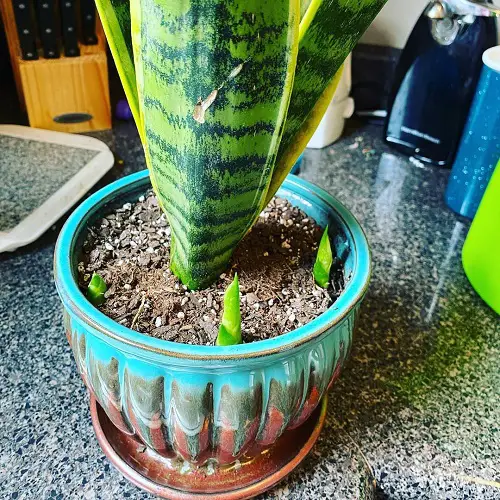
Are you noticing tiny snake plant pups sprouting around the mother plant? That’s great news — your plant is healthy and producing offsets that can grow into new plants.
But here’s the thing, pups need extra care in their early stages. With the right approach, you can help them grow strong and healthy in their own separate pots. Here’s how.
How to Take Care of Snake Plant Pups When They Are Young
1. Use the Right Soil Mix

Well-draining soil is non-negotiable. That’s because soggy soil leads to root rot and oxygen deprivation for roots. A porous, breathable potting mix allows the young roots to grow without staying wet for too long.
So, how do you make this? Mix 2 parts potting soil or a succulent mix, 1 part perlite or coarse sand (to increase aeration), 1 part peat moss or coco coir (to retain necessary moisture), and 1/2 part compost or organic matter for nutrients. Simple, right? You can also try these recipes!
2. Water Less, But Water Smart
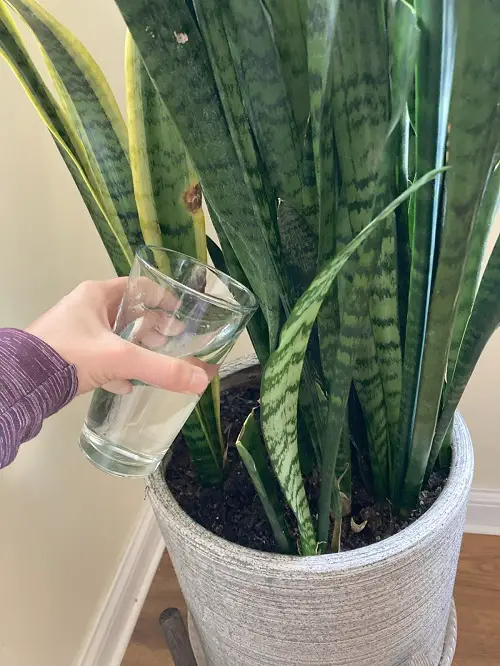
For snake plants, “less is more” really applies to watering. Use the finger test — poke into the soil about 1–2 inches deep. If it’s still damp, skip the watering.
You should know that young pups are extra sensitive to overwatering as they have delicate roots. So let the soil dry out between waterings. Just follow these snake plant watering tips!
Along with these, choose a pot with enough drainage holes to drain out excess water, always leaving the soil appropriately moist, and water deeply.
In a Nutshell: Stick to the soak-and-dry method — water thoroughly, then wait until the soil is completely dry.
3. Get the Light Right

If your pup’s growth seems slow despite good soil and watering, the issue might be light. Snake plant pups do best in bright, indirect light. So, a southeast or east-facing window is ideal as it gets steady light without the harsh afternoon sun.
Avoid direct midday sun, especially for young pups, as it can scorch the leaves. If natural light is limited, you can use a grow light to supplement.
Too little light can cause leggy, weak growth. It’s also one of the reasons why your plant may not produce pups at all! Pay attention to this and then choose a spot that receives bright indirect light at least half of the day.
4. Fertilize, But Only When Needed
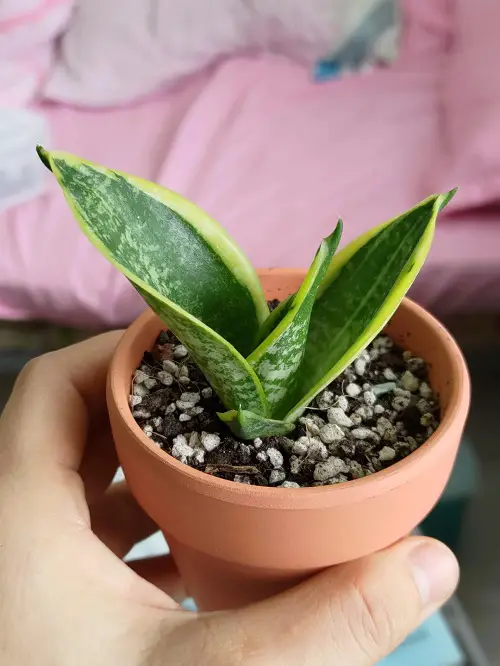
Young snake plants don’t need much fertilizer. If you’ve added compost or organic matter to the soil, that might be enough for 3–5 months. Otherwise, use a diluted, one-quarter strength balanced liquid fertilizer (10:10:10 NPK) once every 6-8 weeks during the growing season.
Once they grow a bit, give them one of these fertilizers and they’ll develop really well!
Pro Tip: Stop feeding once after mid-fall arrives and continue to avoid it throughout the winter when the plant is dormant. Pick it up again in early spring, around March-April.
5. Watch for Pests
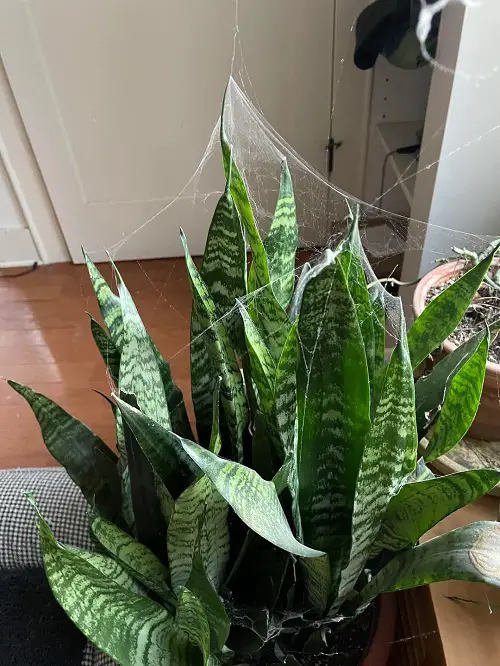
Pups are vulnerable because their roots and leaves aren’t fully developed. They’re also really attractive to fungus gnats, spider mites, mealybugs, and aphids. Always keep an eye out for tiny black flies around the soil, sticky leaves, and cottony white spots!
If needed, use a diluted neem oil spray (50:50 with water) or try safe DIY alternatives like a mix of water and a few drops of dish soap.
6. Mind the Temperature and Airflow
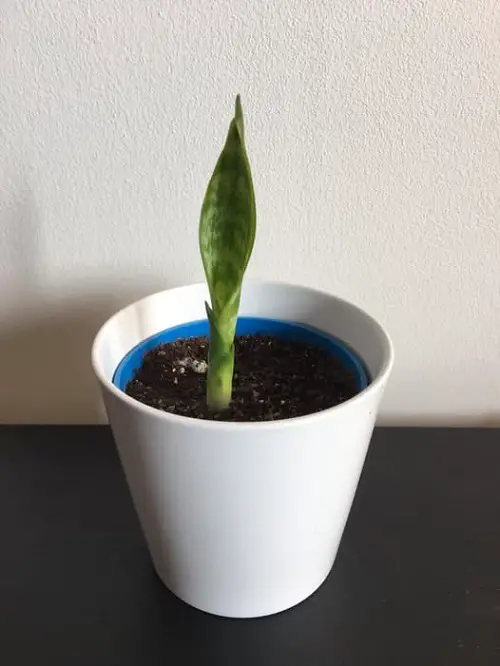
Snake plant pups can be sensitive to sudden temperature drops or blasts of dry air (like from an AC or heater). Keep them in a space that stays between 18–27 C (65–80 F) with gentle airflow, but avoid cold drafts or direct contact with fans or heaters.
Too much dryness or cold can cause leaf curl or stunt the pup’s early development. Obviously, you don’t want soggy air, but clustering young pups together or with other plants can create a mini microclimate with a bit more moisture in the air around them (which they’d like).
7. Transplant Them Right
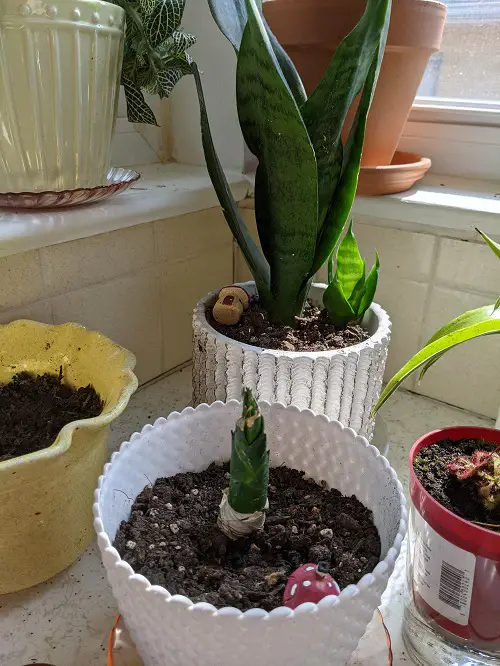
When you remove the pups from the mother plant, set them aside in a dry, shaded area for at least 3 days. This helps the exposed parts dry out and form a protective layer, reducing the risk of rot.
But the work doesn’t end there. After the callusing period, plant the pups in well-draining, preferably dry soil. The soil can be very slightly moist, but completely dry is ideal to further prevent rot.
Once planted, do not water them immediately. Allow the pups to adjust and settle into the soil for 3-5 days before watering so the roots have time to adapt and anchor, reducing transplant shock. When you finally water, do so lightly.
Here’s a full step-by-step on planting snake plant pups the right way — check it out for more detailed instructions.
Extra Tips That Make a Big Difference

- Repot during early spring or summer. This is when growth is active, so pups adapt faster.
- Separate the pups carefully. When it’s time, gently remove the plant and lay it on a sheet. Remove excess soil, and use a sterilized tool to avoid damaging anything!
- Terracotta pots work well (for many things). They pull excess moisture out and help keep the root zone cooler in hot climates.
- You can also try water propagation – grow pups in water jars for a clean, modern look. Just remember to change the water weekly.
So, are you ready to raise some healthy pups? Share your progress and let us know how your plant family grows. We’re here for all your plant parent questions.


